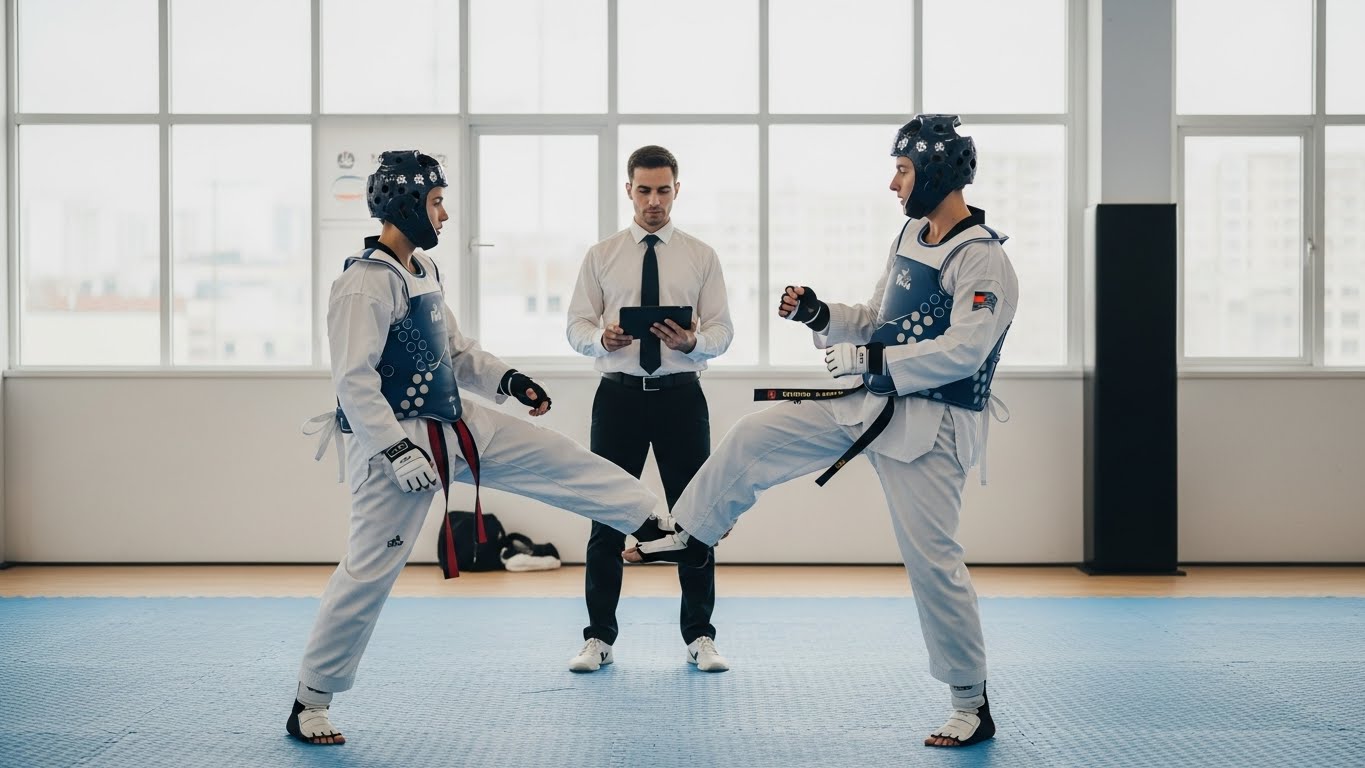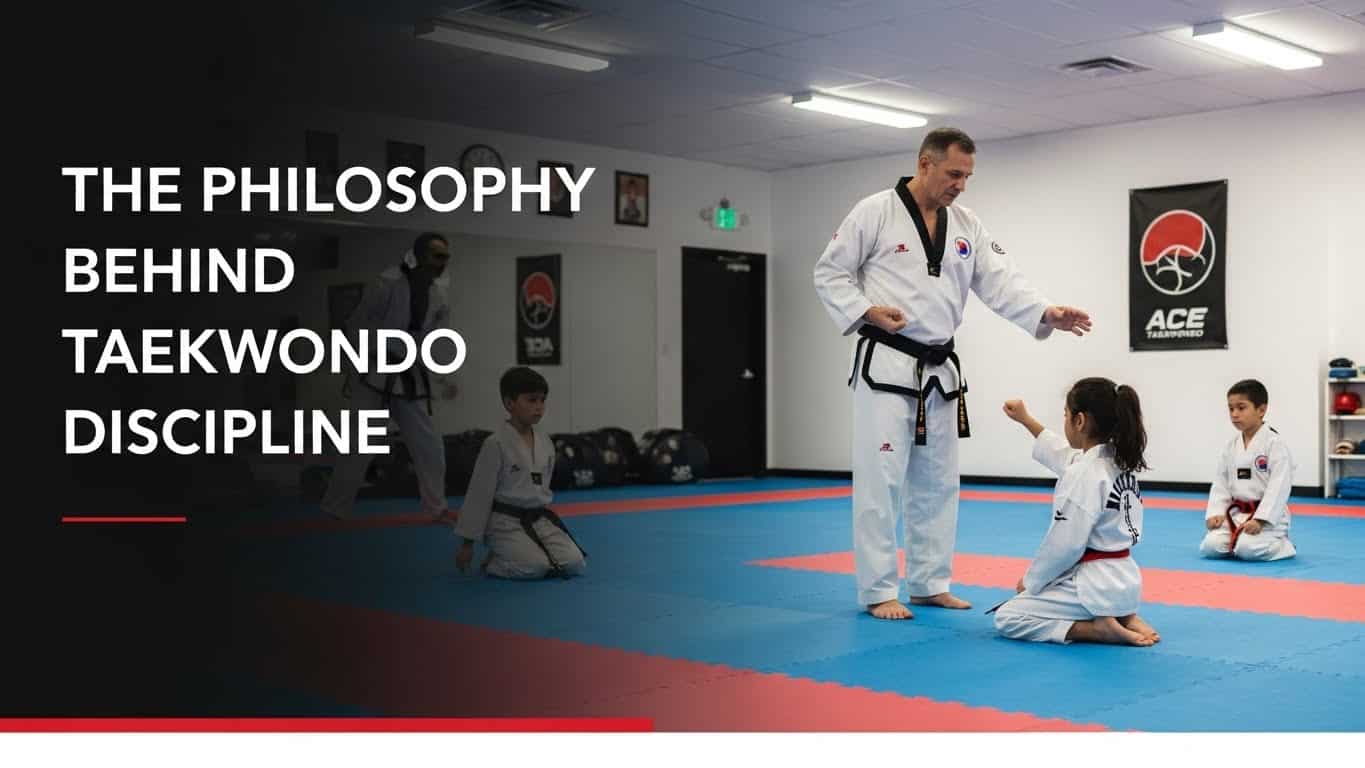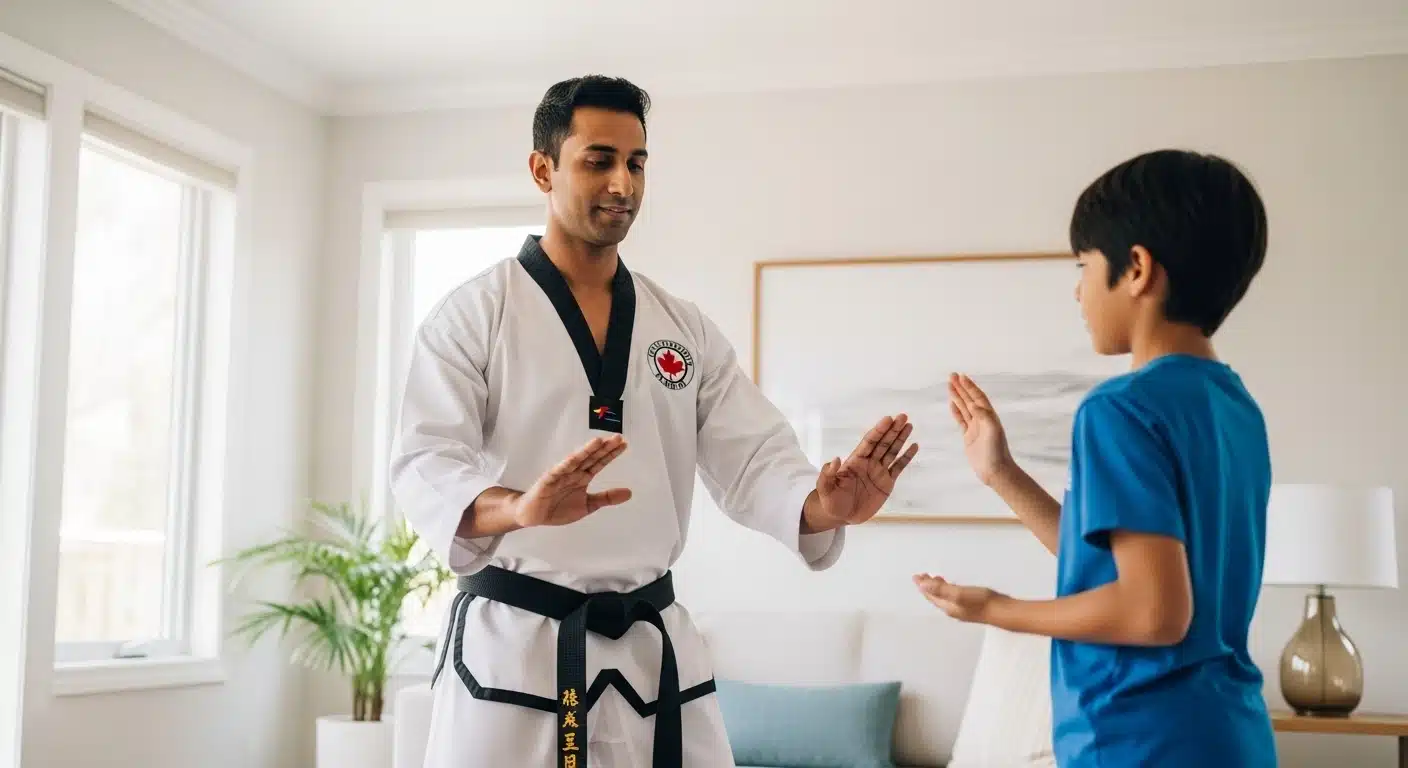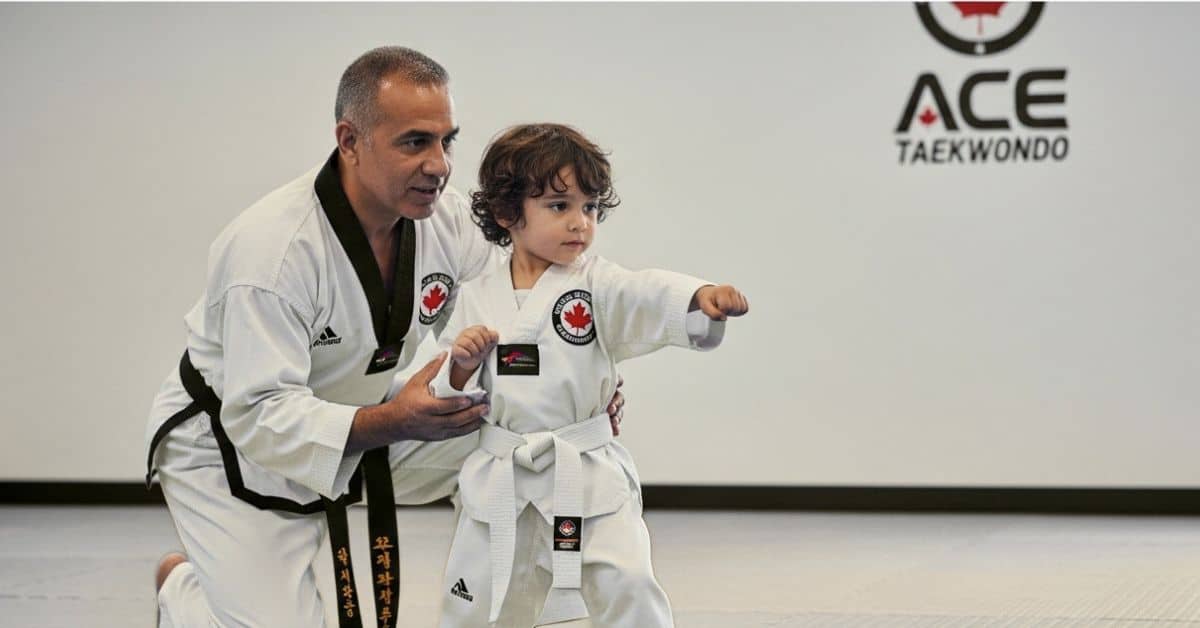I teach adults every day at Ace Taekwondo. Many start with doubt. They ask, “Can I still learn?” Then they earn their first belt. Their eyes light up. In that moment, I see drive, pride, and calm focus. That is the belt system at work.
This blog shares why adults love it, how it supports real growth, and how we guide you on that journey.
What the belt system gives adults
The belt system turns big dreams into clear steps. You see your path. You train with purpose. You test, pass, and move ahead with proof.
Adults value that structure. Life moves fast. Time feels tight. A clear plan helps you stay the course.
Martial arts belt progression: simple, fair, and visible
The belt path shows where you start and where you can go. It breaks skill into levels you can reach.
- You learn set skills for each belt.
- You practise with focus.
- You test when ready.
- You earn the next belt and record your progress.
This martial arts belt progression gives you a map. It replaces guesswork with steps you can follow.
Belt ranking motivation: fuel you can feel
Adults like milestones they can see. A new belt is a strong motivator. It rewards steady work, not luck.
Here is how belt ranking motivation builds momentum:
- Clear goals: You know the skills you must show.
- Short cycles: You aim for the next level, not a vague future.
- Honest feedback: You get direct notes after class and tests.
- Pride that lasts: You wear progress on your waist, every class.
Goal-setting in martial arts: small wins, big change
At Ace Taekwondo, we link each belt to goal-setting in martial arts that fits adult life.
- One new kick by Friday.
- Ten strong push-ups by next week.
- A smooth pattern by the test date.
Small wins stack up. They lead to achievement levels in Taekwondo that feel natural and earned.
Progress tracking in martial arts: know where you stand
You improve what you track. Adults like data they can trust, even if it’s simple.
We use checklists and coach notes after each class. This progress tracking in martial arts shows:
- What do you do well today?
- What to fix this week?
- What to add before grading.
You leave each class with one straightforward task. That keeps you moving.
Colour belts in martial arts: symbols adults respect
Belt colour is more than fabric. It marks growth, skill, and resolve. Colours help you and your peers see effort at a glance. That creates respect in the room.
You also learn how different arts use colour. Many visitors ask for an explanation of the Karate belt colours. We demonstrate how systems differ and explain why belt levels in Taekwondo align with our skills and values. You gain context without confusion.
Belt exams and testing in martial arts: feedback that guides you
Adults appreciate fair tests. Our belt exams and testing in martial arts follow set standards. You know the plan weeks ahead. You get a prep list. You practise. You test. You pass when you meet the mark.
Each test brings a written note. That note guides your next cycle. It builds trust because the system feels transparent and honest.
Taekwondo grading for adults: discipline with purpose
Taekwondo grading for adults does more than measure skill. It builds daily habits. You show up. You tie your belt. You warm up. You train hard and safely. You bow with respect. This rhythm shapes you.
This is discipline through belt promotion. Discipline stops feeling harsh. It starts to feel like self-care. That shift helps at home and work.
Adult learners and martial arts milestones: why timing matters
Adults learn best in steady chunks. Work and family come first. So we plan smart.
We use short drills, clear sets, and focused rounds. We mark adult learners’ and martial arts milestones on the calendar. We celebrate each one. You feel seen and supported, even on busy weeks.
Sense of achievement in martial arts: a win you carry outside class
A new belt brings a sense of achievement in martial arts that you can carry into daily life. You sit taller in meetings. You breathe better in tense talks. You know you can face hard things and stay calm.
Students tell me the best part is the quiet pride. No loud claims. Just steady proof that you keep your word to yourself.
Motivational system for adult learners: why the belt works so well
Adults respond to clear rules and fair rewards. The belt system is a motivational system for adult learners because:
- It sets a clear finish line for each stage.
- It shows effort and skill, not age or speed.
- It rewards practice that you control.
- It builds habits that spread to other parts of life.
Structured learning in Taekwondo: the framework behind growth
We teach with structured learning in Taekwondo. Each class has a simple arc:
- Warm-up and mobility.
- Stance and basic strikes.
- Kicks and patterns.
- Pads or partner work.
- Cooldown and coach notes.
This flow cuts noise. You left it clear on what changed today.
Earning belts as an adult: start where you are
Many adults start with tight hips or old injuries. That’s fine. We scale drills. We watch from. We build strength and control step by step.
Earning belts as an adult proves you can grow at any age. You don’t need to be fast or flashy. You need to be consistent.
Symbolism of martial arts belts: a story you write over time
Belts tell a story. White stands for a fresh start. Each level adds skill and insight. By black belt, you see how far you’ve come. You also see how far you can still go.
This symbolism of martial arts belts keeps you humble and hungry, in the best way.
The black belt journey for adults: a path with meaning
The black belt journey for adults is not a sprint. It’s a steady path of small gains. You build power, balance, and focus. You also build patience. You learn to show up on hard days and easy days. That is the real skill.
Adult personal development activities: why Taekwondo stands out
Many seek growth in books and apps. Those help, but they stay in the head. Taekwondo adds to the body. You train your mind and body simultaneously. That combo is rare.
As adult personal development activities go, few match the belt path for clarity and lasting impact.
How do we prepare you for tests at Ace Taekwondo?
We keep it simple:
- A clear checklist for the next belt.
- Weekly focus notes.
- A short mock test two weeks before the grading.
- Calm, fair testing day with feedback.
You do the work. We coach and support. Together, we make the next step feel safe and doable.
Achievement levels in Taekwondo: what changes at each stage
Each belt adds a layer:
- Basics: stance, guard, straight strikes, core kicks.
- Control: balance, chamber, re-chamber, clean landings.
- Flow: patterns with timing and breath.
- Power: pad work, hip use, safe force.
- Composure: eyes up, calm heart, wise choices.
Thecse achievement levels in Taekwondo stak into real skill you can trust.
Quick compares: Karate belt colours explained vs Taekwondo.
Both arts use colour to mark growth. The order and names can differ. The key is the same: clear steps, objective tests, and honest work. We respect all arts. We focus on belt levels in Taekwondo that match our standards at Ace Taekwondo.
Safety, respect, and steady gain
Adults care about safety. So do I. We warm up nicely. We coach clean form. We scale contact. We keep respect at the centre of each drill. You feel safe to push and safe to pause.
New to class? Here’s how to start strong
- Book a trial at Ace Taekwondo.
- Share your goals and any limits.
- Join a beginner class this week.
- Practice ten minutes at home on off days.
- Ask one question after each class.
That’s enough to build a habit that sticks.
Read more: Taekwondo vs Gym Workouts
Ready to begin? Train with us at Ace Taekwondo.
I, Master Viresh, invite you to start your martial arts ranking system journey with us. Book a trial, meet the team, and see how the belt path feels in your hands.
We teach with care. We coach with respect. We follow a clear plan. You will grow.
Frequently Asked Questions
Am I too old to start the belt journey?
No. You can start at any age. I scale drills to your body and goals. You grow step by step at Ace Taekwondo.
How long does it take to earn the next belt?
Most adults progress in 8–12 weeks with steady attendance. Your pace depends on practice and skill. I will give you a checklist so you know exactly what to improve.
What if I don’t pass a belt test?
You get clear feedback the same day. We fix gaps in class and at home. You book a retest, and most students pass on the next try.









